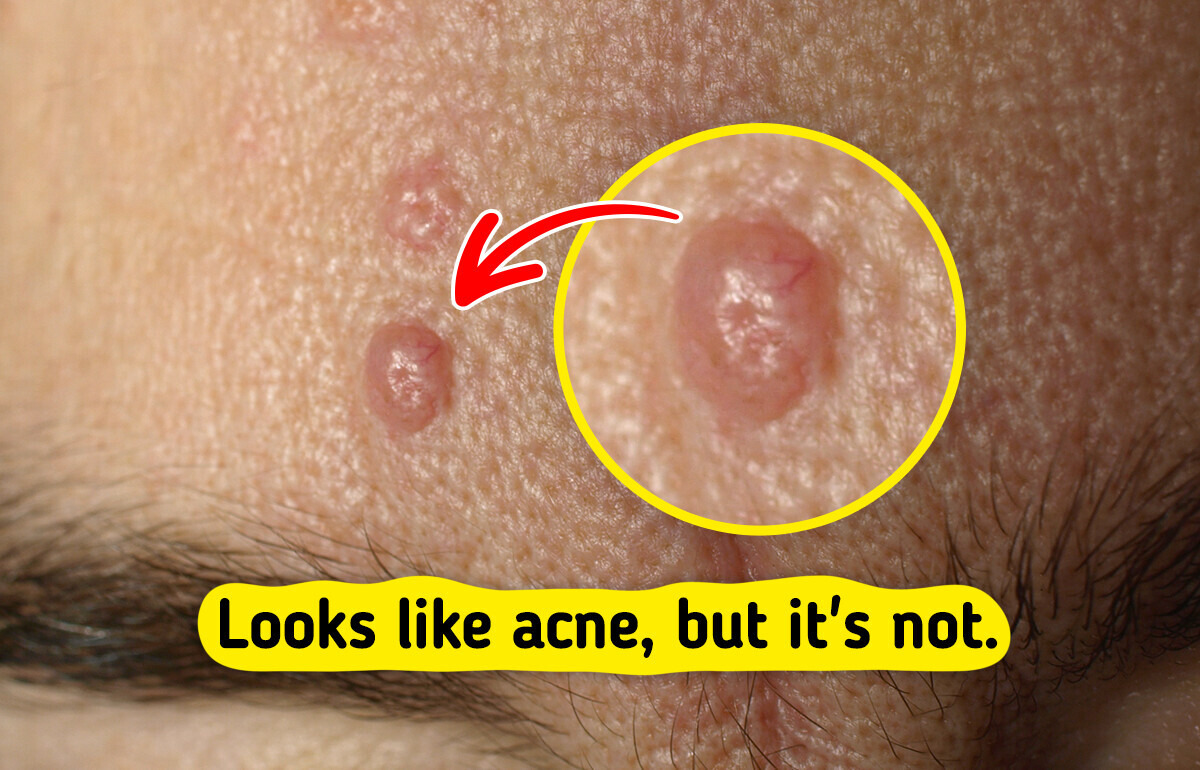My Sister Publicly Embarrassed Me at Family Dinner—I Turned the Tables on Her


In the morning, many people glance in the mirror for different reasons, whether it’s to follow a skincare routine, recite affirmations, or simply check for any facial changes. While doing so, some might spot bumps on their skin. These aren’t always acne; they could be something entirely different.
CONTENT IS PROVIDED FOR INFORMATIONAL PURPOSES ONLY AND IS NOT INTENDED AS A SUBSTITUTE OF MEDICAL ADVICE.
SEEK GUIDANCE OF YOUR DOCTOR REGARDING YOUR HEALTH AND MEDICAL CONDITIONS.
Your face is exposed to a lot each day, so it’s no wonder a pimple can pop up unexpectedly. However, not all skin bumps are caused by acne.
Facial bumps can vary in size, color, and shape, and most are generally harmless. But in some cases, they might be associated with underlying health conditions. It’s important to consult a doctor if a bump causes discomfort or changes in appearance. This article will help you recognize common facial bumps that aren’t caused by acne.
Sebaceous hyperplasia may resemble acne but is actually the result of enlarged oil glands. When they become enlarged, they can create soft or firm bumps that appear white, yellow, or flesh-toned. Hormonal fluctuations are a common trigger.
These bumps typically have a tiny indentation in the middle. Sebaceous hyperplasia can resemble basal cell skin cancer, so it’s a good idea to have a doctor examine it for proper diagnosis.
It’s generally harmless and doesn’t require treatment unless it becomes bothersome. If it does, a doctor can help remove it. Skincare products containing niacinamide, retinol, or salicylic acid may also help reduce its appearance.
Syringomas are growths that originate from sweat ducts. They typically form in small groups on the eyelids but can also appear on other areas of the body, including the face, armpits, belly button, chest, or vulva. These bumps are firm, round, and skin-toned or slightly yellow, usually measuring between one and three millimeters.
Several factors can contribute to the development of syringomas, such as stress, physical activity, genetic factors, or sometimes an underlying medical condition. Since they can resemble other skin conditions, it’s recommended to consult a doctor for an accurate diagnosis and potential treatment options.
Molluscum contagiosum is a viral skin infection that causes small, wart-like bumps. These growths are typically pink, skin-toned, or light brown and often feature a tiny indentation in the center. They can sometimes cause itching or lead to redness and irritation in the surrounding skin.
This condition is contagious and spreads through direct skin-to-skin contact or by sharing personal items such as towels, clothing, or bedding. Although molluscum is most commonly seen in children, adults can develop it as well.
The bumps usually clear up on their own over time, though the process can take several months to a few years. For those who prefer quicker results, dermatological treatments are available.
Milia appear as small, smooth white bumps that persist over time. These tiny cysts typically form in groups, commonly on the cheeks, nose, or around the eyes.
They often develop after skin trauma or from using thick products that block pores. Other contributing factors include sun exposure or specific genetic conditions. To prevent milia, avoid excessive rubbing of your skin and opt for lighter skincare products. If they don’t resolve on their own, it’s best to consult a professional for treatment.
Sebaceous cysts are harmless, slow-developing lumps that form beneath the skin. They commonly appear on areas like the scalp, face, ears, back, chest, or groin. They are typically filled with a combination of keratin, oil, and dead skin cells.
Unlike other bumps that feel attached to the skin, sebaceous cysts can shift a little when pressed. They might remain the same size, grow gradually, or occasionally become inflamed or rupture, increasing the risk of infection. While they usually don’t require treatment and may disappear on their own, they often come back. If a cyst becomes painful, swollen, or infected, it’s advisable to consult a doctor.
Xanthelasma appears as pale yellow or white patches or bumps near the eyes, most often on the eyelids. These formations are typically flat and uneven.
These bumps are composed of cholesterol deposits beneath the skin, and individuals with xanthelasma often have elevated cholesterol levels. While they are not harmful, they can be removed if they become bothersome. If you notice these bumps, it’s a good idea to consult your doctor, as they may indicate high cholesterol or other underlying health conditions.
Keratosis pilaris is a common skin condition that leads to small, rough bumps. It typically shows up on the upper arms or thighs, though it can also affect the cheeks.
The exact cause isn’t fully understood, but it often runs in families and is more likely to appear in people with eczema. While it’s harmless and tends to improve over time, you can manage its texture with regular use of exfoliating and hydrating creams.
This guide may help you recognize and understand an unfamiliar bump on your skin. If you notice a red bump on your face, it’s helpful to determine whether it’s acne or something else. Acne can appear in various forms, including pimples, blackheads, whiteheads, cysts, and nodules. These bumps can be sensitive to touch, often feeling painful or tender.
In contrast, many other skin bumps are painless, appear alone, and don’t come with surrounding breakouts.
If you have a persistent bump that isn’t going away and you’re unsure what it is, it’s encouraged to consult a doctor or dermatologist. Medical attention is especially important if the bump becomes painful, grows or changes color, doesn’t improve, or appears suddenly and spreads.
Most white bumps on the face, like clogged pores or milia, are generally harmless and may not require treatment. However, because some bumps could indicate more serious conditions, getting a professional evaluation is the best way to ensure proper care and peace of mind.
Some signs are often overlooked, but might serve as a warning. In the case of infertility issues, here are some signs to be informed about.











